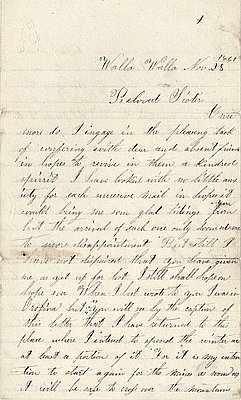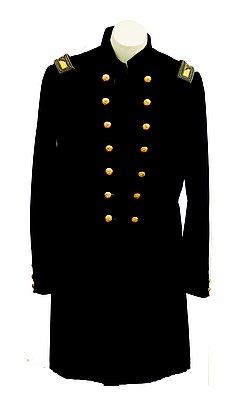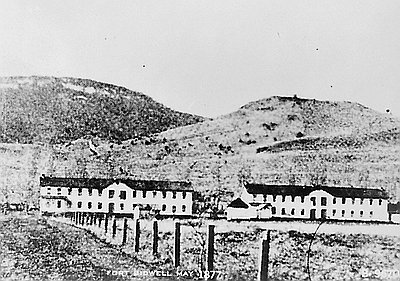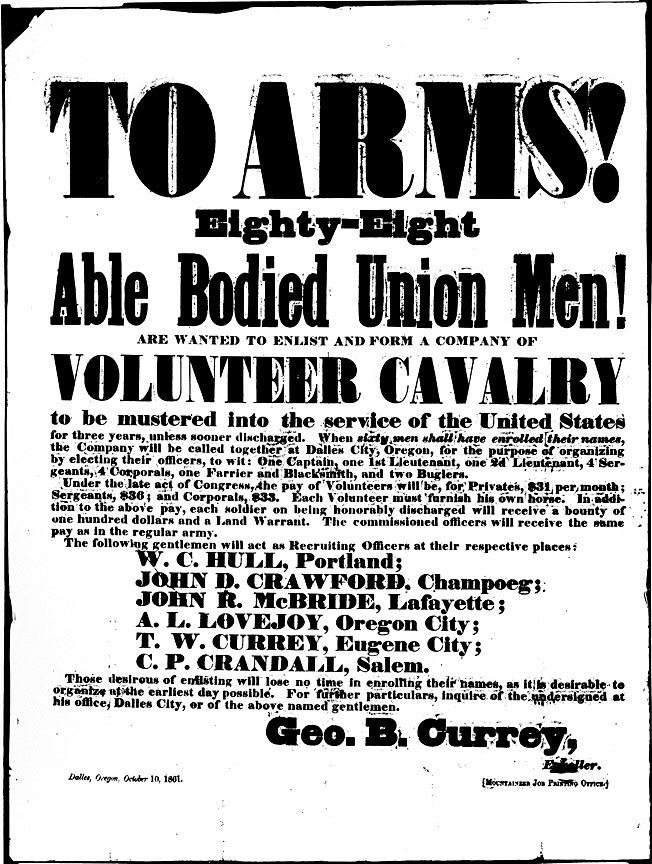- Catalog No. —
- Belknap 621
- Date —
- October 10, 1861
- Era —
- 1846-1880 (Treaties, Civil War, and Immigration)
- Themes —
- Government, Law, and Politics, Native Americans, Oregon Trail and Resettlement
- Credits —
- Oregon Historical Society
- Regions —
- Northeast
- Author —
- George B. Curry
Broadside, To Arms!
This broadside was a recruiting poster printed for Captain George B. Curry by the Mountaineer Job Printing Office in October 1861. Captain Curry raised Company E of the First Oregon Cavalry volunteers in Wasco County.
Following the outbreak of the Civil War in April 1861, Union army officials recalled regular army troops for service in the East. This left regional officials to find a solution for dealing with local military responsibilities, including guarding Indians on reservations in western Oregon, policing the Oregon Trail, and preventing violence between miners and Natives in eastern Oregon and the territory of Idaho. Given the level of pro-Confederate sympathies in southern Oregon, government officials were also concerned about violence between pro-Union and pro-Confederate supporters. The U.S. Army’s Department of the Pacific initially relied on volunteers from California, but in 1862, began the recruitment of local volunteer companies under the standard of the First Oregon Cavalry. These companies, identified by the letters A through M, served in Oregon, Washington, and Idaho from 1862 until 1866.
In the mid 1860s, the major military operation was a series of minor campaigns against the various Native groups of eastern Oregon and southwestern Idaho (Northern Paiute, Shoshone, Bannock), then known to Euro Americans as the “Snake Indians.” Violence flared up in Oregon following the 1861 gold strike near Canyon City, located just south of the town of John Day. The gold strike brought the influx of thousands of miners, and in response to what they perceived as an invasion of their traditional lands, the various Indian groups retaliated against the miners. Retaliation took the form of theft, the killing of stock animals, and in some cases, armed violence against the miners. Company E of the First Oregon Cavalry was involved in several of the expeditions against the regional Native groups from 1863 through 1864. Despite the efforts of military officials to subdue and control the Northern Paiute, Shoshone, and Bannock, their efforts were largely unsuccessful. The Native peoples had the upper-hand at this time because of their adaptation to the climate, and their superior knowledge of the regional landscape. In the late 1870s, the Paiute and Bannock became embroiled in a series of armed conflicts with the U.S. Army. The army eventually subdued the Native groups as a military threat and forced them onto reservations.
Further Reading:
Victor, Francis Fuller. “The First Oregon Cavalry.” Oregon Historical Quarterly 3, 1902: 123–163.
Kenny, Judith Keyes. “The Founding of Camp Watson.” Oregon Historical Quarterly 58, March 1957: 5–16.
Written by Melinda Jette, Oregon Historical Society, 2003.
Related Historical Records
-
From James Mullany to his Sister Mary, 1861
This letter was written by James Mullany to his sister Mary on November 28, 1861. He discusses his experience as a miner in Idaho during the early 1860s, …

-
Oregon Cavalry Volunteers Uniform
This uniform, belonging to Col. Thomas R. Cornelius of Company “D,” First Regiment in the Oregon Cavalry Volunteers, is representative of those worn by soldiers in the Union …

-
Fort Bidwell
Fort Bidwell in Northeastern California (Surprise Valley), built in 1863 and seen here in 1877, was a secure site for white settlers traveling along the Applegate and Lassen …

